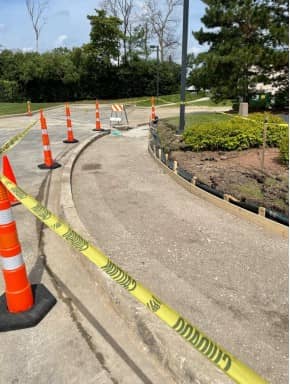How to Repair Commercial Concrete Damage
If your concrete shows any wear and tear, it is best to hire a commercial concrete contractor to fix your concrete issues.
Importance of Commercial Concrete
Concrete has been used to help build and solidify structures for centuries. It is composed of fine and coarse aggregates that bond with fluid cement and harden over time, making it the perfect substance for building material. The importance of commercial concrete cannot be understated; It helps build and reinforce things such as business facilities, industrial buildings, retail stores, concrete sidewalks, walls, and floors.
Without commercial concrete, many of the buildings and places you visit daily would not be as solid and stable as they are. Since commercial concrete is used for a wide variety of things, it needs to withstand greater pressure and have solid structural performance and durability.
One of the biggest advantages of using concrete is the workability and strength of the substance. Commercial concrete is a “fluid” building material because it allows you to pour and mold it into any shape you need and then hardens (cures) into place.
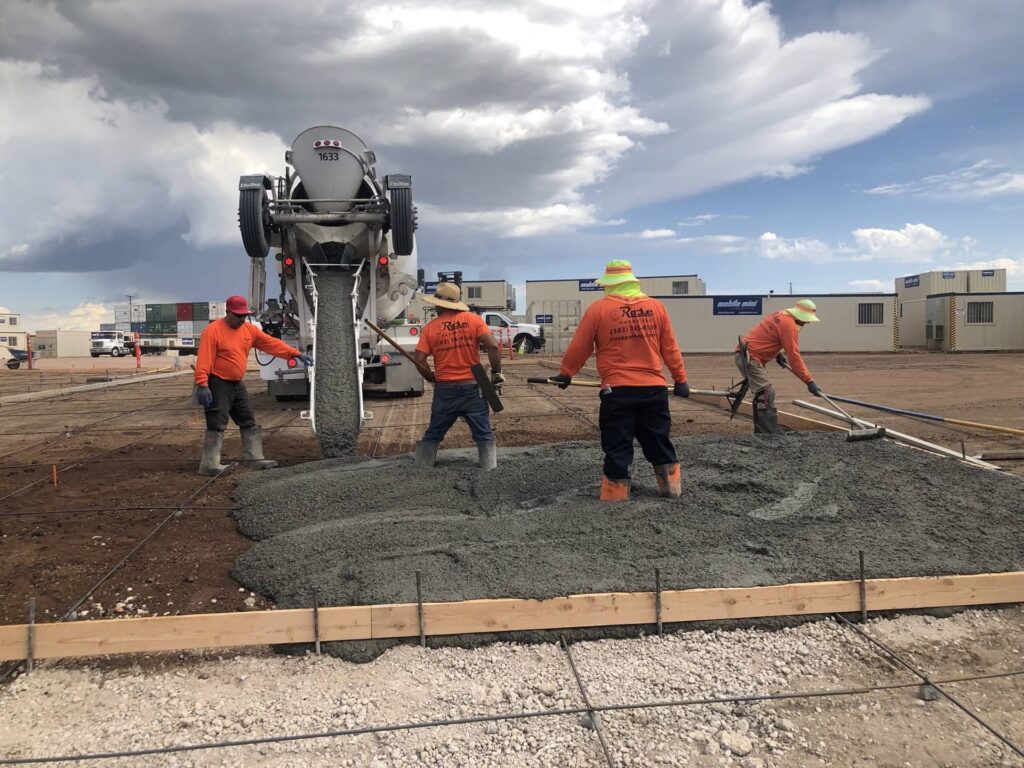
How to Know if You Need to Repair Concrete
There can be many signs that your concrete may need to be replaced, and it is best to contact a concrete contractor to get a professional opinion, but these are a few things you need to look for on your existing concrete.
- Cracks: Cracks may seem like a minor issue, but if left untreated, they can cause further damage to the entire structure of the concrete. For example, cracks on a concrete sidewalk can spread and affect multiple squares if not taken care of immediately.
- Missing chunks: Chunks or “potholes” leave your commercial concrete exposed to weather and other natural elements. With the inner portion exposed, it can accelerate the concrete deterioration. It is best to either resurface the concrete or fully repair the concrete depending on how much damage is done to the structure.
- Pooling of water: If your concrete constantly has pools of water after snowmelt or heavy rainfall, it could indicate uneven subsurface conditions under the concrete. Uneven subsurface concrete will lead to the surface of the concrete developing cracks, becoming uneven, and may lead to the removal of concrete.
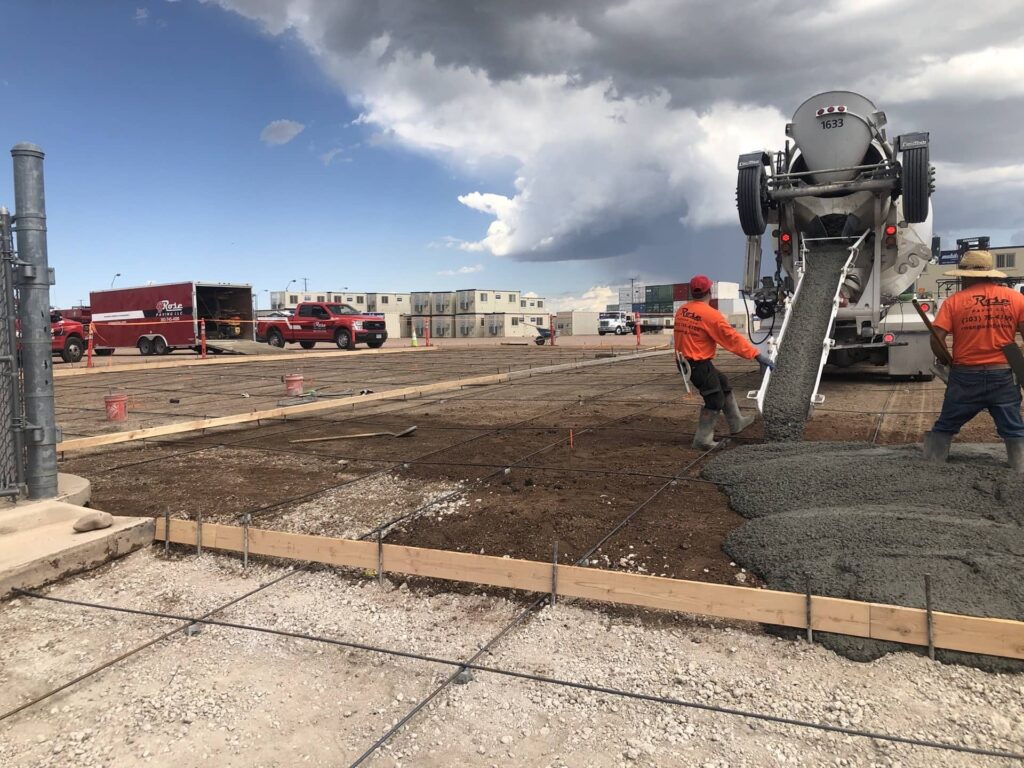
How to Repair Commercial Concrete
Once a concrete contractor has looked over the concrete and determined if you need to repair concrete or resurface concrete, it’s time to get started.
The commercial concrete contractor begins by removing concrete from the repair area using a hydraulic breaker attached to a skid steer. Once the concrete is broken out and removed, we inspect the existing base and determine if there is enough existing aggregate to pour more concrete into. If there isn’t enough aggregate, we will add more to ensure we have a properly compacted base to pour the concrete into. After the aggregate is installed, we compact it with a plate compactor to ensure the concrete pour will be level and will not settle or shift.
Once we have removed the existing concrete and established the grade for the new concrete, it is time to pour.
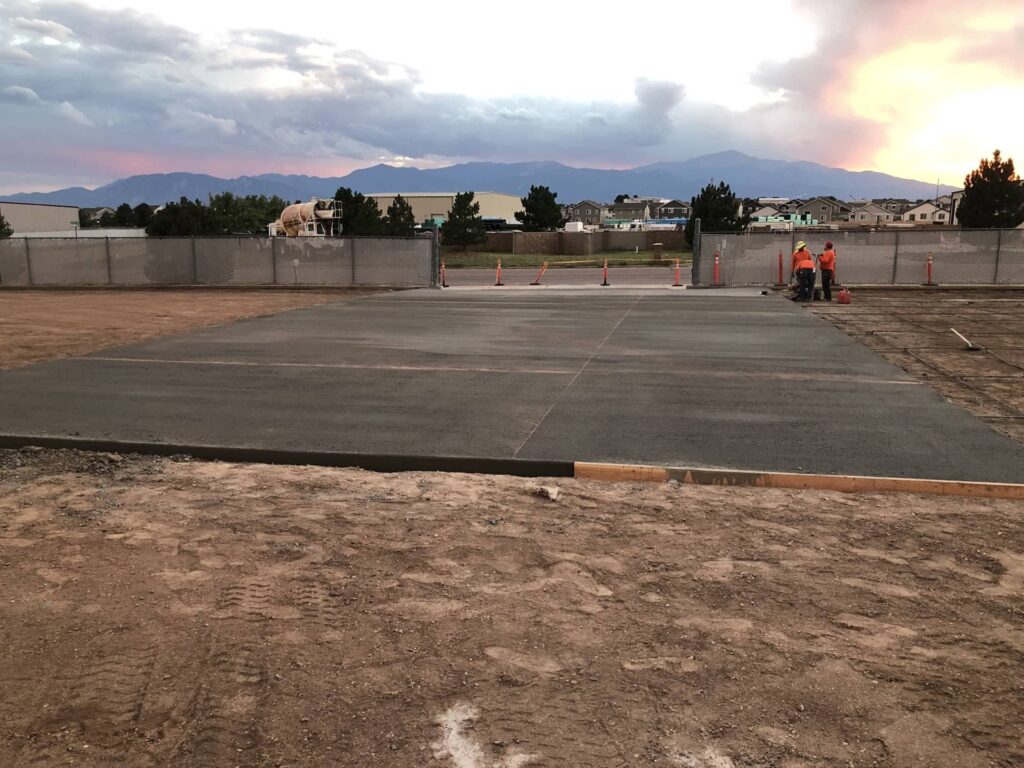
When pouring the wet concrete into place, it is important to pour the concrete into the form until it reaches the top edge. While pouring the concrete, use shovels, rakes, and “come alongs” (a special concrete rake) to ensure the concrete has no voids or air pockets before it cures.
After the concrete has been poured and is settling into place, it is time to screed the top of the concrete. Screeding helps with compacting the concrete and begins the leveling and smoothing process. After we have finished with the screeding, it is time to “float” the concrete; this helps compact the concrete even more and smooths out any uneven areas.
Once the concrete has been poured and is setting in place, you can do any final finishing to the concrete. The most basic finish is a brook finish, where we run a broom over the concrete to give it a rougher texture. But you can also stamp the concrete, which provides it with a textured finish.
One important note to make is that it is important to only pour concrete between the temperatures of 50° Fahrenheit to 90° Fahrenheit. This is to ensure the necessary chemical reactions can take place and the concrete can harden (cure) into place.
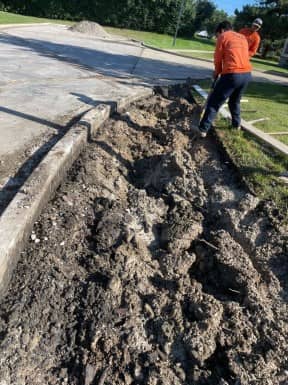
How Rose Paving Can Help You
At Rose Paving, we have provided high-quality service to all concrete and asphalt paving jobs since 1974. We make it our mission to help you with any preventative, maintenance, and structural reconstruction jobs year-round. Contact our dedicated sales team to schedule a consultation.
